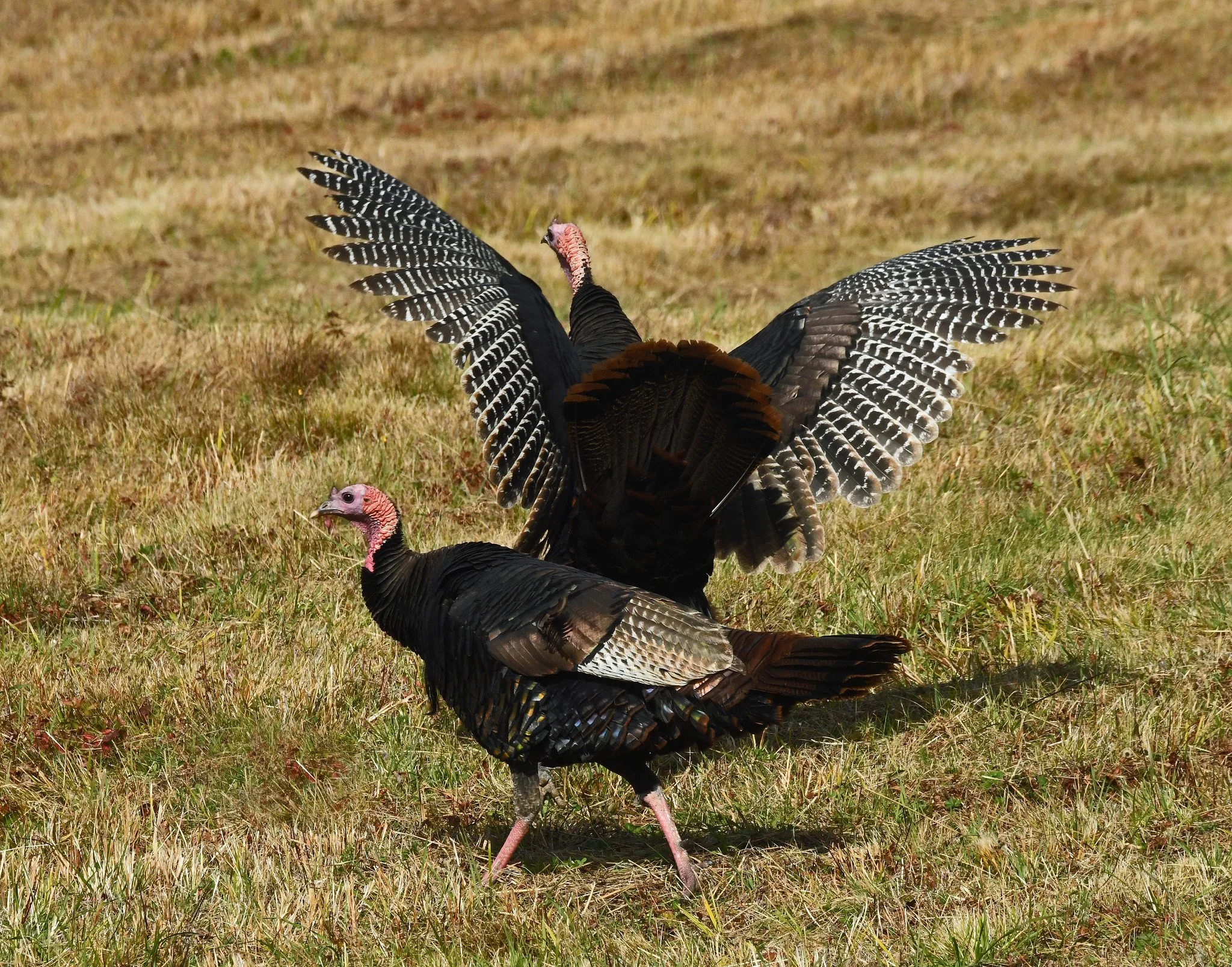Here you see two mature female wild turkeys, and, below, you’ll see one of their immature offspring that was born in May or June and won’t mature until it reaches 17 or 18 months in age.
These birds are part of several rafters of mature females that like to roam with their young and feed in our fields and woods. (They all apparently also love the excitement of hearing automobile brakes when scurrying across cross our roads unexpectedly.)
Female turkeys often look drab as they drift across the horizon pecking away at bugs and seeds. But they’re not. They have the same beautiful primary feathers as males, but we only see those feathers well when the birds (rarely) fly or when they flex their wings momentarily. They also have iridescent breast feathers that can sparkle and flare like a green-, blue-, and red-jeweled vest, if the sunlight is right.
One curious thing about mature female wild turkeys is that they’re simply called by their functional name, “hens.” Yet, the mature males are called Toms, the immature males are Jakes, and the immature females are Jennies. (The very young are all functionally “poults.”) No one seems to know why the mature females never picked up a human nickname.
Come to think of it, using common human names to differentiate the sex and age of animals is a tricky business. For one example, domestic cats have been divided into Toms and Mollies (and queens for mother cats), but domestic dogs are all dogs.
(Images taken in Brooklin, Maine, on October 23 and 26, 2025.)



